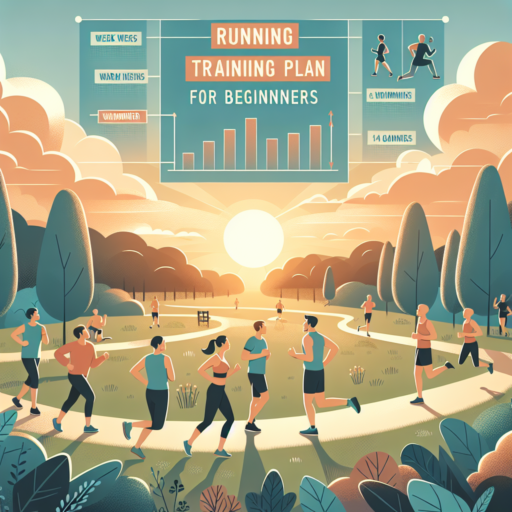How to train for sub-5 min mile?
Training for a sub-5 minute mile is a significant achievement that combines speed, endurance, and strategy. Achieving this incredible feat requires a specificity in your training regimen that is both rigorous and intelligently designed.
Develop a Solid Base
First and foremost, building a robust base of mileage is crucial. Start by gradually increasing your weekly mileage, ensuring you’re comfortable running at a steady pace for longer distances. This foundational endurance is key to improving your overall running efficiency and stamina, elements critical for breaking the 5-minute barrier.
Incorporate Speed Work
Once a solid base is established, integrating speed work into your routine becomes imperative. Interval training, such as 400m repeats, should become a staple of your program. Aim to run these intervals at a pace slightly faster than your target mile pace, with short rest periods in between. This type of training improves your VO2 max and enhances your body’s ability to clear lactate, both essential for maintaining a high pace over the mile distance.
Focus on Recovery
Lastly, never underestimate the importance of recovery. Adequate rest, combined with good nutrition, plays a pivotal role in preventing injuries and ensuring that your body can absorb the hard work you’re putting in. Incorporate easy runs and rest days into your schedule to allow for proper recovery and to keep your training on track toward achieving that sub-5 minute goal.
How to train for a 5 mile run in 2 weeks?
Training for a 5-mile run in just two weeks might seem daunting, but with the right approach, it’s certainly achievable. The key is to structure your training to gradually increase your endurance and speed without risking injury. Here’s a compact guide to get you race-ready in a short time.
Week 1: Establishing a Base
The first week should be about laying a strong foundation. Start with shorter distances and gradually increase your mileage. A good start would be running 1 mile on the first day, resting the second day, then adding half a mile to your distance each subsequent running day. Include at least one day of rest between runs to allow your body to recover. Emphasize the quality of each run over quantity, focusing on maintaining a consistent pace that feels challenging yet sustainable.
Week 2: Intensity and Taper
In the second week, introduce more intense training sessions but decrease your overall mileage to avoid burnout. Incorporating speed work or interval training can significantly improve your pace and endurance. For instance, after a warm-up, run at a high intensity for 1 minute followed by 2 minutes of jogging or walking to recover. Repeat this cycle 5-7 times depending on your comfort and fitness levels. Two days before your event, cut down your running to a light jog or a comfortable 2-mile run at most, to ensure your muscles are well-rested.
Remember, while it’s important to push your limits, listening to your body and adjusting your training plan accordingly is crucial to prevent injuries. Hydration and proper nutrition also play a vital role in your training, so be sure to fuel your body with the right nutrients to support your running regimen.
No se han encontrado productos.
How to run 1600m in 5 minutes?
Running 1600 meters in 5 minutes is a challenging goal that requires a blend of speed, endurance, and strategic planning. Achieving this milestone is not just about the physical capabilities but also about understanding the techniques and training methods that can enhance your performance. It’s a journey that encapsulates rigorous preparation and disciplined training routines designed to push your limits and optimize your running efficiency.
Understanding the Basics of Speed and Endurance
To attain the goal of running 1600m in 5 minutes, it is crucial to develop a solid foundation of both speed and endurance. This entails incorporating a variety of workouts into your training regimen. Intervals, long runs, and tempo workouts each play a pivotal role in enhancing your aerobic capacity and speed. Focusing on improving your VO2 max and lactate threshold is essential for sustaining a high pace over the distance. Consistency in your training, coupled with targeted speed work, lays down the groundwork for achieving this formidable task.
Optimizing Running Form and Technique
Efficiency in your running form is paramount when aiming to complete 1600m in such a tight timeframe. Every stride, arm swing, and breath counts when you’re pushing for speed and efficiency. It is advisable to work with a coach or utilize video analysis to identify and correct any form inefficiencies. Improving your running economy can significantly lower the energy cost of running at high speeds, thus enhancing your ability to maintain a faster pace for longer durations. Practicing drills that improve your stride length and cadence are also beneficial for this purpose.
How many people can do a sub 5 minute mile?
Breaking the 5-minute barrier for a mile run is a significant achievement in the world of running, marking a milestone for many amateur and professional athletes alike. This elite performance level is not something that the average runner achieves without dedicated training and exceptional physical condition. The number of people capable of running a sub 5-minute mile is relatively low when compared to the wider running community, yet it’s a goal that motivates countless individuals to push their limits.
Statistics on exact numbers are hard to pin down due to the informal nature of many mile attempts outside professional competitions. However, it is estimated that only a small fraction of runners achieve this feat. Among high school athletes in the United States, fewer than 5% of male runners and significantly less than 1% of female runners record mile times under five minutes during their careers. Among adult runners, the percentage drops even further, illustrating the challenging aspect of this goal.
Dedication to intense training, a specific diet, and regular competitions are key components for those aiming to join this exclusive club. Advanced running techniques and strategies, such as interval training, strength conditioning, and pacing strategies, play a crucial role in shaving seconds off mile times. Furthermore, individual physical capabilities and genetics also heavily influence one’s potential to achieve a sub 5-minute mile, making it a benchmark attainable by only a select group within the running community.




